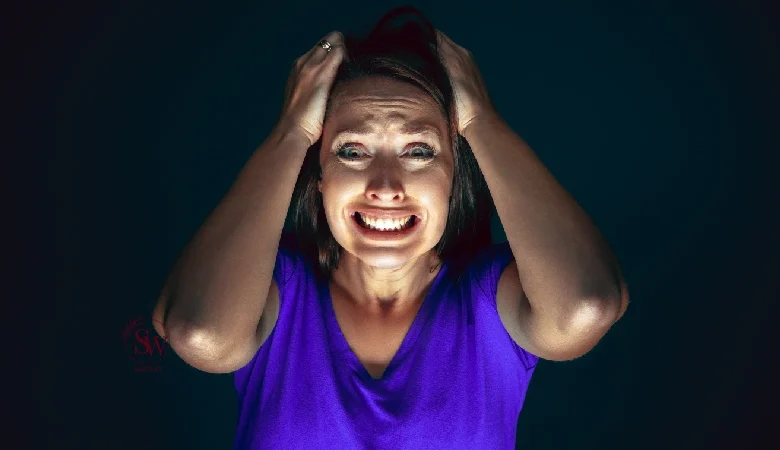What Is Panic Attack?

Panic attacks can be terrifying and debilitating experiences for those who suffer from them. While they are relatively common, many people are unaware of what exactly constitutes a panic attack, what triggers them, and how to effectively manage them. In this comprehensive guide, we delve into the intricacies of panic attacks, exploring their causes, symptoms, and practical coping strategies to help individuals navigate through these distressing episodes.
What is a Panic Attack?
A panic attack is a sudden onset of intense fear or discomfort that reaches its peak within minutes. These episodes can occur unexpectedly or may be triggered by specific situations, objects, or thoughts. Individuals experiencing panic attacks often report feeling a sense of impending doom, along with physical symptoms such as rapid heart rate, sweating, trembling, shortness of breath, chest pain, dizziness, and a feeling of detachment from reality.

Causes of Panic Attacks
Panic attacks can stem from various factors, including biological, psychological, and environmental influences. While the exact cause may differ from person to person, common triggers and risk factors include:
- Genetics: Research suggests that a family history of panic disorder or other anxiety disorders may increase an individual’s susceptibility to experiencing panic attacks.
- Brain Chemistry: Imbalances in neurotransmitters, such as serotonin and norepinephrine, are believed to play a role in the development of panic attacks.
- Stressful Life Events: Traumatic experiences, major life changes, or ongoing stressors can trigger panic attacks in susceptible individuals.
- Underlying Health Conditions: Certain medical conditions, such as thyroid disorders or cardiac problems, can mimic the symptoms of panic attacks, leading to misdiagnosis or exacerbation of anxiety.
- Substance Abuse: The use of substances like caffeine, nicotine, alcohol, or illicit drugs can increase the likelihood of experiencing panic attacks.
Symptoms of a Panic Attack

Recognizing the symptoms of a panic attack is crucial for prompt intervention and management. Common signs and symptoms include:
- Sudden onset of intense fear or apprehension
- Rapid heart rate or palpitations
- Sweating or chills
- Trembling or shaking
- Shortness of breath or feelings of suffocation
- Chest pain or discomfort
- Nausea or abdominal distress
- Dizziness or lightheadedness
- Feeling detached from oneself or reality
- Fear of losing control or going crazy
- Fear of dying
It’s essential to note that not everyone experiencing a panic attack will display all of these symptoms. Additionally, individuals may interpret and experience panic attacks differently, further complicating diagnosis and treatment.
Diagnosis and Treatment

Diagnosing panic attacks typically involves a comprehensive evaluation by a healthcare professional, including a physical examination, review of medical history, and assessment of symptoms. In some cases, additional tests may be conducted to rule out other medical conditions that mimic panic attack symptoms.
Once diagnosed, treatment options for panic attacks may include:
- Psychotherapy: Cognitive-behavioral therapy (CBT) is often recommended as a first-line treatment for panic disorder. CBT helps individuals identify and challenge negative thought patterns and learn coping skills to manage anxiety and panic attacks effectively.
- Medications: Antidepressants, particularly selective serotonin reuptake inhibitors (SSRIs) and serotonin-norepinephrine reuptake inhibitors (SNRIs), are commonly prescribed to alleviate symptoms of panic attacks and prevent their recurrence. Benzodiazepines may be used on a short-term basis for rapid relief of acute symptoms but are generally not recommended for long-term use due to the risk of dependence and side effects.
- Lifestyle Modifications: Adopting healthy lifestyle habits, such as regular exercise, adequate sleep, stress management techniques, and avoiding substances that can exacerbate anxiety, can help reduce the frequency and severity of panic attacks.
- Mindfulness and Relaxation Techniques: Practices such as mindfulness meditation, deep breathing exercises, progressive muscle relaxation, and guided imagery can promote relaxation and alleviate anxiety symptoms during panic attacks.
- Support Groups and Peer Counseling: Connecting with others who have experienced similar challenges can provide validation, understanding, and practical coping strategies for managing panic attacks.
How to Help Someone Who Is Having a Panic Attack?

If you encounter someone experiencing a panic attack, it’s essential to remain calm and supportive. Offer reassurance and encouragement, reminding them that what they’re feeling is temporary and that they are not alone. Encourage slow, deep breathing exercises and guide them through relaxation techniques if they’re receptive. Avoid minimizing their experience or telling them to “snap out of it,” as this can exacerbate feelings of distress. Provide a safe and quiet environment, free from unnecessary stimuli, and offer to stay with them until the symptoms subside. If the person has a prescribed medication for panic attacks, such as a benzodiazepine, assist them in taking it as directed by their healthcare provider. If the panic attack persists or worsens, or if the individual is at risk of harming themselves or others, seek emergency medical assistance promptly. Your understanding and support can make a significant difference in helping someone navigate through a panic attack with greater ease and comfort.
FAQs about Panic Attacks:
- Can panic attacks be dangerous?
While panic attacks themselves are not life-threatening, they can cause significant distress and impair daily functioning. In rare cases, panic attacks may lead to complications such as fainting or injury if they occur in high-risk situations (e.g. while driving or operating machinery). - Are panic attacks different from anxiety attacks?
While panic attacks and anxiety attacks share similar symptoms, they differ in terms of intensity, duration, and triggers. Panic attacks are characterized by sudden, intense episodes of fear or panic that peak within minutes, whereas anxiety attacks may involve milder symptoms that persist over a more extended period and are often triggered by specific stressors. - Can panic attacks be prevented?
While it may not be possible to prevent panic attacks entirely, individuals can reduce their likelihood by adopting healthy lifestyle habits, managing stress effectively, seeking timely treatment for underlying mental health conditions, and developing coping skills to manage anxiety triggers. - Is it normal to have panic attacks occasionally?
Occasional panic attacks are relatively common and may occur in response to stressful or triggering situations. However, if panic attacks become frequent, persistent, or significantly impair daily functioning, seeking professional help is recommended to explore underlying causes and develop appropriate treatment strategies.
Conclusion
Panic attacks can be distressing and overwhelming experiences, but with proper understanding, support, and treatment, individuals can learn to manage and mitigate their impact on daily life. By recognizing the causes, symptoms, and available treatment options for panic attacks, individuals can take proactive steps toward regaining control of their mental health and well-being. Remember, you are not alone, and help is available to guide you through this challenging journey towards recovery.




